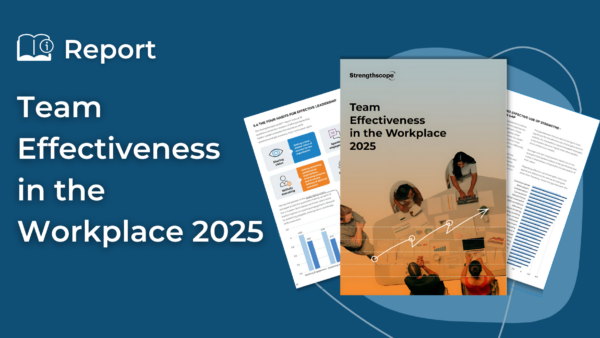Defining coaching – what it is and what it isn’t
First of all, what is coaching? The International Coaching Federation, one of the main representative professional coaching bodies, defines coaching as “partnering with clients in a thought-provoking and creative process that inspires them to maximize their personal and professional potential.” The Academy of Executive coaching says that coaching is “a non-directive approach where the coach holds a safe and trusted space so that the client feels heard and understood.” Finally, CIPD, the Chartered Institute of Personnel and Development, the UK’s professional Human Resources body, doesn’t really offer a definition, more a summary of other people’s definitions as there’s variation. What they say is:
- Coaching is essentially a non-directive form of development.
- It focuses on improving performance and developing an individual.
- Personal factors may be included but the emphasis is on performance at work.
- Coaching activities have both organisational and individual goals.
- It provides people with the opportunity to better assess their strengths as well as their development areas.
- It’s a skilled activity, which should be delivered by people who are trained to do so. This can be line managers and others trained in coaching skills.
So what is coaching definitely NOT then? Well it’s not telling people what to do, nor is it training, as it’s non-directive. When coaching, you need to be super careful about offering advice as it should be non-directive and advice-giving is more directive. Generally, coaches should aim to be facilitative (although there is considerable variation on this spectrum). Coaching is also not mentoring. If coaching involves ‘shoulder-to-shoulder’ conversations where both parties work together to resolve the coachee’s issues, I see mentoring as more ‘eye-to-eye’ advice-giving based on the experience of the mentor. Coaching is also not therapy or counselling – these are practices with their own professional training pathways and they have quite specific guidelines for practice depending on the type of therapy we’re talking about.
Why strengths are so vital in coaching
The strengths-based approach comes from positive psychology and focuses people on their positive qualities and attributes, typically those aspects of their personalities which bring them to life, which energise and motivate them. These are the qualities which people often take for granted, as the predominant approach to personal development in organisations today remains deficit-based….focused on weaknesses and things that people need to fix if they’re going to be successful in their roles and careers. So strengths for many people remain underexplored and for some, almost completely unexplored. Many people don’t have words to describe their strengths and wouldn’t feel comfortable doing so even if they did, as they’d be anxious about looking arrogant.
And yet if your strengths are your most positive, energising, qualities, then might they provide a strong base from which to solve problems, achieve tasks, overcome challenges, build relationships and galvanise energy for development? And that’s why strengths are so vital in coaching. If you can understand your strengths, you’re part way to figuring out how to address your challenges and make the changes you want to. So what then is strengths-based coaching? And how might its definition vary from some of the others that define coaching more generally that I’ve already covered? I would define strengths-based coaching as a coach ‘supporting their client to identify their own strengths as a means to build confidence and self-efficacy to face into challenges, solve problems and achieve the changes they are seeking to make.’
Let’s bear in mind also that strengths don’t come without risks. We talk about strengths in overdrive as risk no 1: when your use of strengths isn’t appropriate to the situation so doesn’t get you the outcome you’re looking for. Risk no. 2 are your drainers – these are the qualities which drain the life out of you, de-energise you and which may represent weaker areas that need attention, if they are performance-critical in your role. So strengths-based coaching, at least by our definition, doesn’t pull punches, it also addresses the things which might go wrong if they’re left unaddressed.
The STRONG model of coaching – supercharging GROW
Moving on then to a classic coaching model: the GROW coaching model. And how you can build on this model when you introduce strengths to the picture. First of all, let’s look at the GROW coaching model. The model was originally developed in the 1980s but has been extended and expanded a bit since then.
In essence, to help any coaching conversation, the idea is that together, you establish a goal (the ‘G’ of the model) – something tangible and real and meaningful that the coachee buys into. Then, you check on the coachee’s starting point in relation to this goal…this is the ‘R’: reality – is the coachee already some way towards achieving the goal or are they really at zero? How far along are they – so, together, you gather evidence on this to gauge their current position. Once you know where you’re going and how far you have to go until you get there, you start to explore the O – options – how the coachee can achieve the goal, and also, what obstacles might get in their way? Finally, you need to agree actions and commitments – a ‘Way Forward’ and test the ‘will’ or commitment of the coachee – and that’s the ‘W’ of GROW, the final letter.
OK, so the GROW coaching model is a bona fide coaching classic. So why change it? Well let’s just say that adding strengths explicitly into the coaching mix upgrades the coaching approach significantly. And you can do that using our STRONG coaching model. Never heard of? Well not till now. Let’s go through each stage in turn. Like the ‘G’ of Grow, the purpose of the first stage of the STRONG model, Set Goals, is to find out what the person you’re coaching wants to achieve. Stage 2 is ‘Translate into Strategies’, so the coach helps the coachee establish reality and identify approaches and strategies to achieve their goal. Stage 3 is ‘Release Strengths’ – helping the person being coached to focus in on their greatest personal sources of energy to move towards their goal. Stage 4 helps the person being coached to ‘Overcome Risks’ that might get in the way of their success. Stage 5 is ‘Nurture progress’, where you spot and celebrate progress towards the goal, also noticing which approaches have been most successful up to this point. This is another strategy from positive psychology – appreciative inquiry…identifying what has worked and then doing more of it. The final stage, is to ‘Get commitment’ – like the ‘W’ of GROW, this stage seeks to establish the level of commitment the coachee has to achieving the goal and whether their action plan will get them there.
Killer strengths-based coaching questions
I remember about 12, 13 years ago, I was invited to run a session for around 100 professional coaches at Melbourne Business School on using the STRONG coaching model. We used Strengthscope to help people pick their top 3 strengths and then gave them some killer questions to use to help each other with a current challenge. We did this in triads with around 10 minutes per person. By the end of the second round, one of the coaches looked at me (he’d been using GROW for years) and said ‘What have you done here? It’s magical!’ Well now’s the time for me to pass that magic on to you. The killer questions I gave those coaches were…
- Set goals – What do you want to achieve? Why do you want that?
- Translate into strategies – What could you do to make this happen? What have you done in the past that’s worked?
- Release strengths – How could you use your strengths to achieve your goal?
- Overcome risks – What strengths in overdrive might hold you back from achieving your goal? What drainers might get in the way? And how can you limit the impact of each?
- Nurture progress (this won’t be used at a first session BTW) – What has gone well or given you the most energy so far? Which strengths have you used?
- Get commitment – What specifically are you going to do now? On a scale of 1-10, how likely are you to do this?
In closing – STRONG is simple and so effective
Not rocket science is it? In fact, it’s so so simple. And yet, the explicit addition of strengths into a GROW type structure makes all the difference. Why? Because it empowers the coachee, gives them a tangible framework to work within, balances the positives of strengths with the mitigation of risk and, over time, by noticing progress using strengths, supports the coachee to adopt a more permanently positive approach to problem-solving. You can use any strengths tool or model with the coachee so that they can pick their strengths – a valid one would be ideal lol. The coaching and using the questions is the magic. Hope you enjoy giving it a go. And if you already are, please share the love by sharing this podcast. And while you’re at it, head over to the Strengthscope website Resources section for more, much more, on this topic and lots of others – we’re at strengthscope.com. Till next time, stay STRONG!











